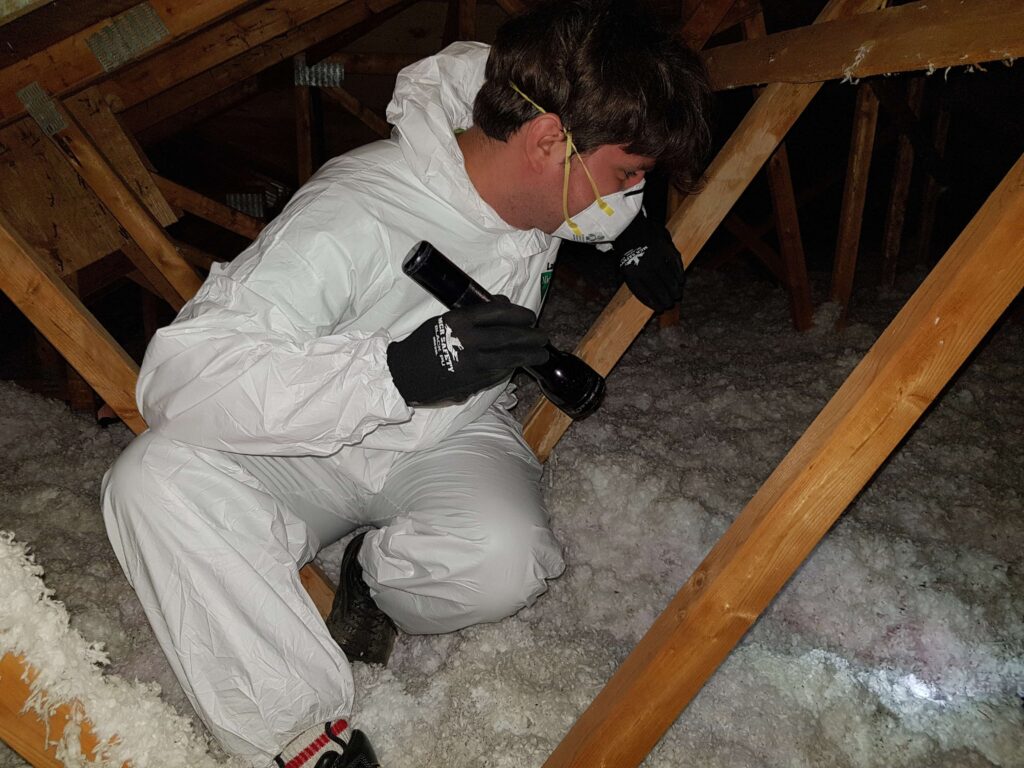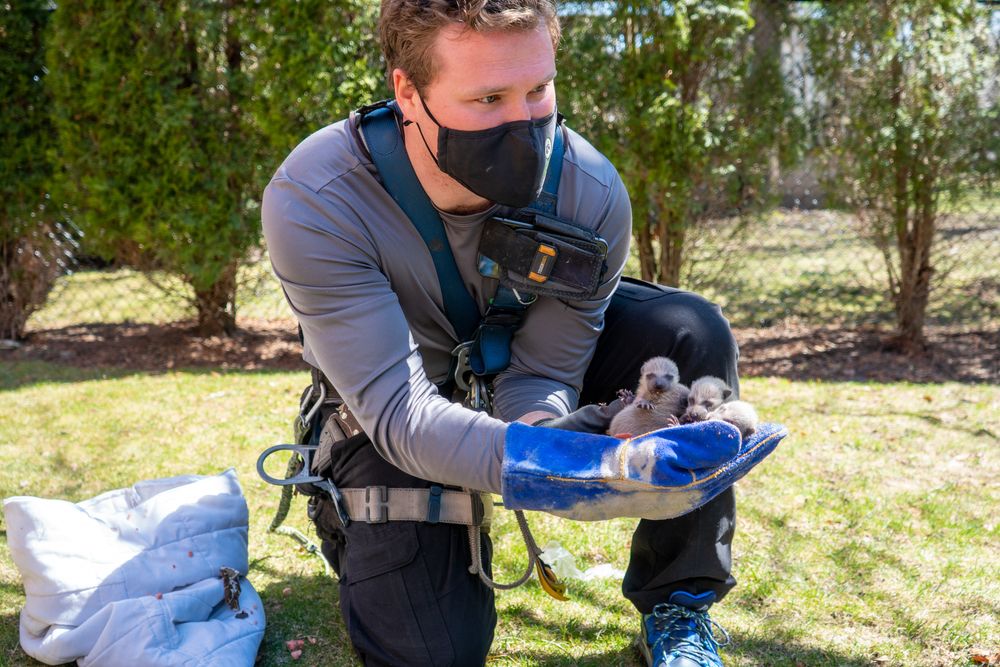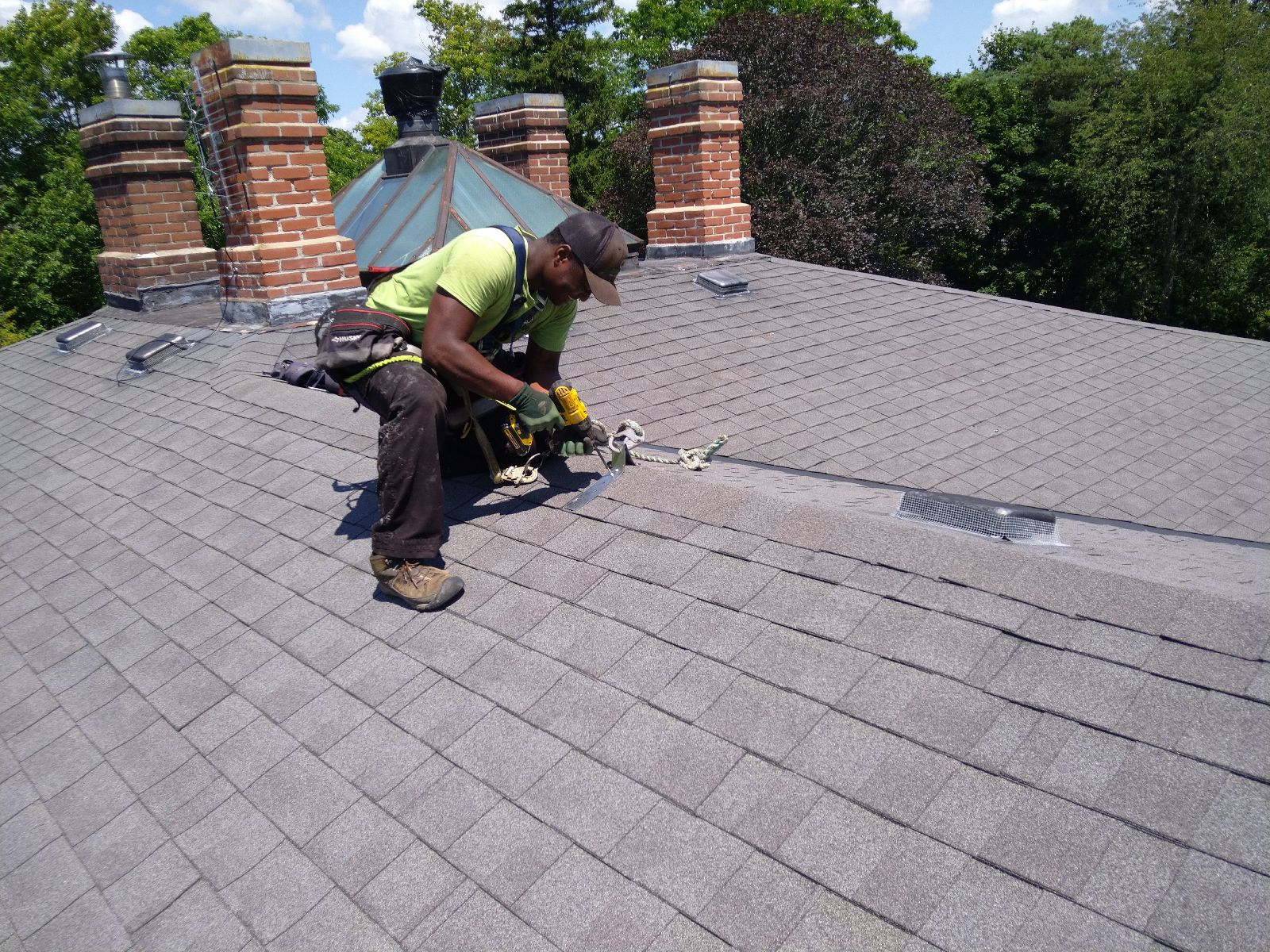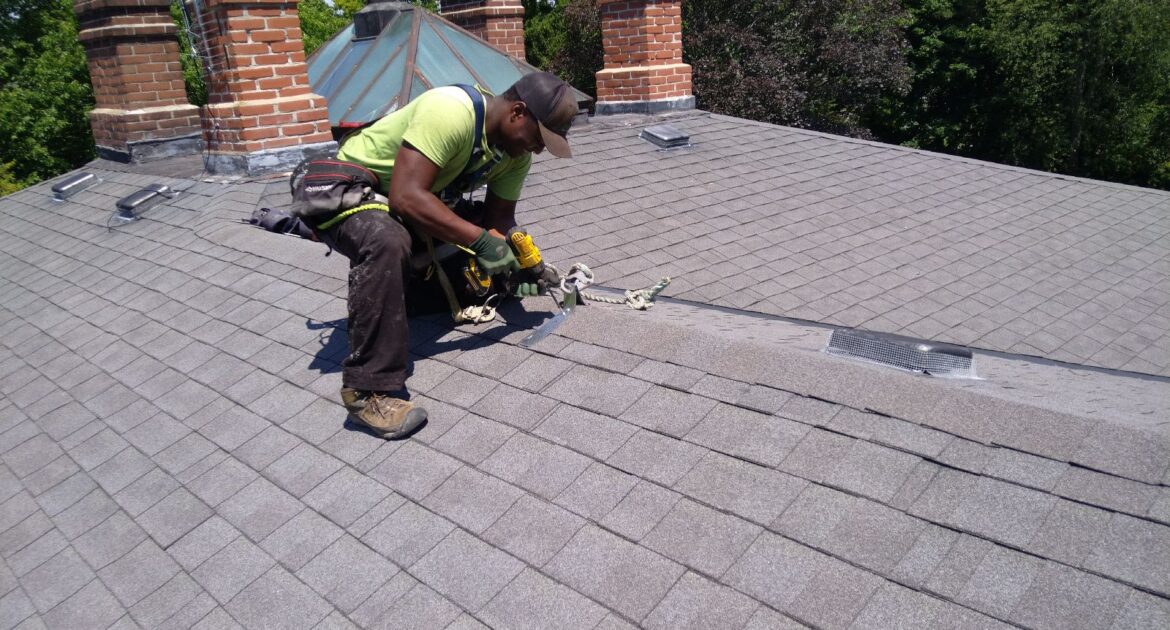Raccoons are intelligent and highly adaptable critters. Many homeowners have experienced losing the battle of wits with a raccoon intent on feasting on human leftovers for dinner. No matter what we do to secure our trash bins, it seems these sneaky animals find a way to outsmart us. Spreading garbage across the yard isn’t the worst of it.
Raccoons often make their way into homeowners’ attics and set up a little place of their own. One option raccoons will try is entering through a ridge vent and we explain more here about how they gain entry into your home this way.
If you discover unwanted tenants in the upper reaches of your home, contact Skedaddle for humane raccoon removal. We ensure a safe eviction and take measures to prevent future incursions. Read on to find out about one sneaky way these animals might be getting into your home, why they do, and what you can do about it.
What Is a Ridge Vent?
Part of being a wildlife removal professional is spending a lot of time on roofs. After all, that’s where the animals usually get into a house. Skedaddle Humane Wildlife Control visits thousands of homes each year, giving us the chance to see first-hand the latest trends in roofing technology. In recent years, the use of ridge venting has become more popular, especially in new home construction.
Ridge venting provides continuous attic ventilation across the entire peak of a sloped roof instead of rectangular or circular vents that only allow air to escape through isolated areas. Homes with cathedral or vaulted ceilings, where there is limited space for air circulation, receive the most benefit from ridge venting. Beyond functional appeal, ridge vents have the added benefit of being nearly invisible when looking at the roof from the ground.
How Does Wildlife Get in Through a Ridge Vent?
One of the biggest roof ridge vent problems is that they provide easy access for wildlife. With more and more homes using ridge venting to circulate attic air, it’s no surprise that clever raccoons, squirrels, mice and bats have begun to use them as an access point. The trouble with ridge venting is that the shingle capping that covers the hole into the attic is held together with just a few roof nails.
All that warm air from the attic is very appealing to wildlife, and, as you can see from the video, it doesn’t take much for a raccoon to lift the shingles and find a cozy new home inside your attic. Squirrels easily chew through the exposed shingle edge, and mice squeeze past the fibrous weather guard with ease. The safest way to get rid of raccoons in your attic is to contact Skedaddle for professional and humane raccoon removal.
Why Do Raccoons Live in Attics?
If your attic is like most people’s, you may use it for storage but not much else. Unfinished attics don’t provide the most comfortable environment for humans, but raccoons love them. They protect them from predators and shelter them from the elements, and they’re often at a pleasant, comfortable temperature.
How They Get In
A raccoon may not look like much of a climber, but one of many interesting raccoon facts is that their hands are well-suited for climbing. They have sharp claws, dexterous digits and nearly opposable thumbs, allowing them to quickly scale the side of a tree and climb onto your roof.
Those same traits also prove handy when raccoons want to access your attic. They often gain entry through your homes:
- Roof vents, chimneys or plumbing mats
- Roof edges
- Roof-soffit intersections
These creatures are nocturnal animals, so they often get in at night when everyone in your home is sound asleep and may not notice their arrival.
When You Are Most Likely To See Them

Raccoons may seek out your attic for their living quarters at any time of year; however, the most likely time to see them is when mama raccoons are preparing to give birth and raise their little ones.
The mating season occurs in late winter. Expectant females seek an adequate space to raise a family, and human structures, especially attics, provide the ideal environment. The kits are born in early spring, and the mothers will keep their offspring in the birthing den for approximately three months.
How To Know You Have a Raccoon in Your Attic
Though you might not hear them come in, people’s first indication of raccoon tenants is noises in their attics. Other signs include:
- Visible damage to the roof, soffit or roof vent
- Nesting materials in the attic, including insulation and other materials found in the attic
- Signs or scents of feces or urine in the attic
- Raccoon sightings
When you have raccoons in your house, you don’t want them sticking around. Contact Skedaddle for humane raccoon removal.
Why You Don’t Want Raccoons as Houseguests
Raccoons are not good houseguests. Not only are they noisy and destructive, but they also can transmit diseases to people and pets. Raccoons are not aggressive but can become so if they feel threatened. They are rabies carriers, and you don’t always know when they have the disease. They also transmit leptospirosis through their urine and feces, along with E. coli and salmonella.
What Can You Do?
To avoid costly wildlife and weather damage inside your attic, it is crucial to secure any ridge vents found on your roof. A little prevention goes a long way. The best things you can do are trim any trees around your home to remove easy roof access and eliminate desirable food sources. Clear the yard of fallen fruits or nuts and latch garbage bin lids.
We never recommend attempting raccoon removal on your own. You risk harm to yourself and the animal. Additionally, you may separate a mother from her offspring, ensuring they have little chance of survival. You also do not want to attempt exclusion or repairs when you notice signs of damage, as you may inadvertently seal an adult raccoon or kits inside.
How Can Skedaddle Help With Raccoon Removal?

If you believe your attic is home to unwanted animal visitors, connect with Skedaddle today. We start by performing a comprehensive assessment of your home’s exterior and attic and provide you with a written copy of our findings. We promise to get the animals out and guarantee they won’t be able to get back in. We also remove contaminated materials and clean up the messes the raccoons made.
Skedaddle Humane Wildlife Control’s technicians can animal-proof your home’s ridge vents with heavy gauge steel screening that allows your attic to breathe and keeps animals where they belong. Best of all, our workmanship and materials are guaranteed for life. Get in touch to learn more about how we can help or schedule services.




